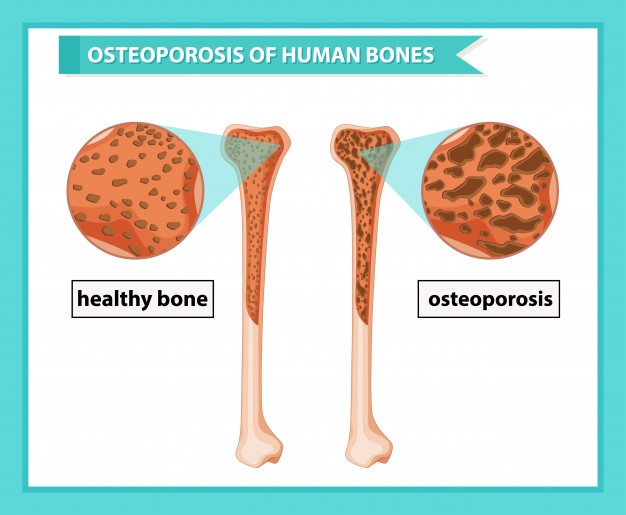- No products in the cart.
Osteoporosis
Home » Osteoporosis

What is Osteoporosis?
- Osteoporosis means “porous bone.”
- Bones are porous or weaker in people with osteoporosis, which increases the risk of fractures.
- Particularly in the hip, the vertebrae of the spinal cord and some peripheral joints, such as the wrists.
- In fact, Osteoporosis is present in about 2 million men over the age of 65. Many osteoporosis patients are female, the overall bone peaks somewhere between ages 25 and 30.
Osteoporosis Symptoms:
In the early stages of bone loss, there are usually no signs. But once osteoporosis has damaged the bones, you may have signs and symptoms including:
- Back pain caused by a broken or collapsed vertebra
- Height loss over time
- Stooped posture
- A bone that fractures much faster than expected.
What Causes Osteoporosis?
Bone loss — where bone breakdown is more rapid than bone accumulation, it usually starts in the mid-30s. Bones start losing calcium, mineral that makes them difficult. There is less bone remodeling and the bones begin to thin.
Risk factors for osteoporosis:
- Women are at higher risk than men, especially women who are slim or have a small frame, as are older women.
- Particularly those with osteoporosis family member, are at higher risk of developing osteoporosis compared to other women.
- Postmenopausal women, including those with early or surgically induced menopause or abnormal or menstrual period absence, are at greater risk.
- Smoking of cigarettes, eating disorders such as anorexia nervosa or bulimia, low dietary calcium levels, heavy alcohol use, inactive lifestyle and the use of certain medicines such as corticosteroids and anticonvulsants;
- The risk factor for osteoporosis is rheumatoid arthritis itself.>
- The risk factor for offspring is having a parent who has / had osteoporosis.Osteoporosis may also occur as a result of a number of diseases or procedures, including obesity, anorexia, hyperthyroidism, kidney disease, and ovarian surgery.
Osteoporosis Prevention
Good nutrition,diet and regular exercise are essential to maintaining healthy bones throughout your life.
Protein – Protein is one of the building blocks of bone body.
Body weight – it is good for bones to maintain a proper body weight.
Calcium – Men and women aged 18 to 50 allow 1,000 milligrams of calcium per day. Once women turn 50 and men turn 70, this daily amount rises to 1,200 milligrams.
Vitamin D increases the ability of your body to store calcium and other ways of maintaining bone health.
Exercise can help you build strong bones and slow loss of bones.

